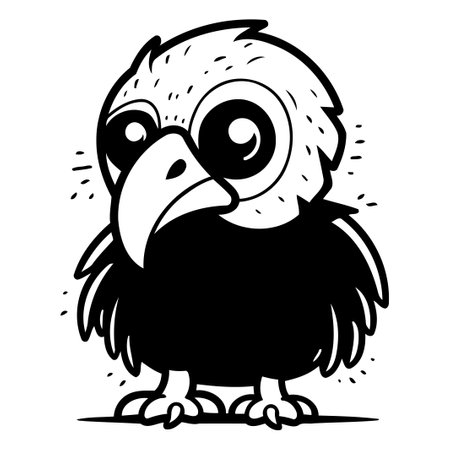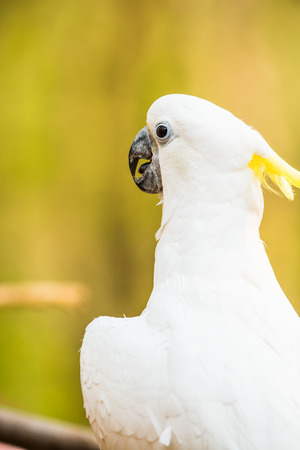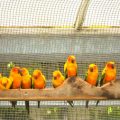1. Introduction to British Bird Breeds for Training
In the United Kingdom, birds have long held a cherished place in both homes and community spaces, not only for their beauty but also for their remarkable intelligence and social nature. Certain bird breeds are particularly favoured across the UK due to their adaptability to domestic training, their friendly temperament, and their positive impact on social well-being. Engaging with birds such as budgerigars, canaries, and cockatiels has become increasingly popular, as these species tend to thrive in interactive environments and are known to encourage companionship, routine, and emotional connection among their owners. The process of training these birds—whether it’s teaching them simple tricks or encouraging vocalisation—contributes significantly to mental stimulation and creates opportunities for meaningful interaction within households or community groups. Below is an overview table that highlights some of the most popular British bird breeds chosen for training and enhancing social enrichment:
| Bird Breed | Key Traits | Suitability for Training | Social Benefits |
|---|---|---|---|
| Budgerigar | Affectionate, Intelligent | High | Promotes conversation & reduces loneliness |
| Canary | Musical, Gentle | Moderate | Enhances relaxation & mood through song |
| Cockatiel | Loyal, Playful | High | Encourages playfulness & social interaction |
This focus on specific bird breeds stems from a desire to enhance daily living through animal companionship while supporting individual and communal well-being—an approach that aligns closely with contemporary British values around health, mindfulness, and inclusivity.
Popular British Bird Species Suited to Training
Britain is home to a variety of native and commonly kept bird breeds, many of which are well-suited for training and social enhancement. Whether you are looking for a companion or aiming to encourage cognitive development, understanding the unique traits of these birds can help you make an informed decision. Below, we explore some of the most popular British bird species known for their adaptability, intelligence, and friendly nature.
Common Native and Kept Species in the UK
| Species | Native/Kept | Key Characteristics | Training Suitability |
|---|---|---|---|
| Budgerigar (Budgie) | Kept | Highly sociable, intelligent, vocal | Excellent; responds well to positive reinforcement and basic tricks |
| European Robin | Native | Tame, friendly, recognisable by red breast | Moderate; enjoys interaction but best left semi-wild |
| Canary | Kept | Mellow temperament, beautiful song, colourful plumage | Good; can be trained for singing and simple routines |
| Barn Owl | Native/Kept (with licence) | Nocturnal, gentle, iconic heart-shaped face | High; often used in falconry and educational programmes |
| African Grey Parrot* | Commonly Kept (not native) | Exceptionally intelligent, excellent mimics, social bonds | Outstanding; thrives on mental stimulation and advanced training tasks |
| Zebra Finch | Kept | Lively, easy to care for, active in groups | Basic; suitable for group enrichment activities rather than solo trick training |
The Benefits of Training British Birds
Selecting the right species is crucial for successful training outcomes. Budgies and African Grey Parrots are especially popular among UK households due to their intelligence and eagerness to engage with people. Canaries delight with their songs and provide a calming presence. While native birds like robins and barn owls may require specific permissions or conditions for keeping, they offer unique opportunities for education and bonding when trained responsibly.
Cultural Considerations in Britain
The British tradition of bird-keeping places emphasis on welfare and enrichment. When choosing a bird for training or companionship, always consider ethical sourcing and the specific needs of each species. Proper training not only enhances the bird’s quality of life but also strengthens the human-animal bond—making bird-keeping a rewarding experience across generations in the UK.

3. The Benefits of Bird Training for Well-being
Integrating bird training into daily life offers a unique set of mental and social health benefits, particularly within British households. Birds such as budgerigars, canaries, and cockatiels are not only delightful companions but also provide structured opportunities for positive routines and emotional enrichment. Engaging with birds through training encourages mindfulness, reduces feelings of loneliness, and fosters gentle interactions that are especially valuable in the UK’s often busy or isolated environments.
Mental Health Advantages
Training birds requires patience, observation, and consistency—skills that have been shown to support cognitive function and reduce anxiety. The process of teaching birds simple tricks or encouraging natural behaviours can be both relaxing and rewarding. For those living alone or working from home, the presence of a trained bird adds structure to the day and promotes a sense of responsibility.
Social Interaction and Community
Birds are natural communicators, responding to voices and gestures, which makes them ideal for enhancing social engagement. Training sessions can become shared family activities or even community events, such as local bird meet-ups in British parks or online forums. These interactions help build connections among people with similar interests, supporting overall well-being.
Comparison Table: Key Well-being Benefits by Bird Breed
| Bird Breed | Mental Health Support | Social Enhancement | Ease of Routine Integration |
|---|---|---|---|
| Budgerigar | High – Stimulating & interactive training potential | Excellent – Sociable & responsive to families | Easy – Adaptable to daily British household routines |
| Canary | Moderate – Calming song aids relaxation | Good – Enjoys gentle interaction; less hands-on | Very Easy – Minimal disturbance to routine |
| Cockatiel | High – Affectionate & bonds closely with trainers | Very Good – Encourages gentle play & conversation | Easy – Thrives on regularity & attention |
The act of caring for and training these top British bird breeds brings daily joy while supporting gentle routines that suit all ages. Whether through morning whistle sessions with a canary or teaching a budgie to mimic phrases in a distinctly British accent, these activities enhance well-being across the household.
4. Training Basics: Best Approaches in the UK
Successful bird training in the UK is rooted in positive reinforcement and respect for avicultural traditions. British bird enthusiasts have long favoured gentle, reward-based methods that foster trust and companionship between birds and their keepers. Understanding the right techniques can make a significant difference in both socialisation and overall wellbeing of your feathered companions.
Positive Reinforcement Techniques
Positive reinforcement is widely acknowledged as the most effective and humane way to train birds. This method involves rewarding desirable behaviours with treats, praise, or attention, making it more likely that the bird will repeat these actions. In the UK, bird trainers often use small pieces of millet, apple, or commercial treats as rewards.
| Training Method | Description | Commonly Used Rewards |
|---|---|---|
| Clicker Training | Associating a clicking sound with a reward to mark desired behaviour. | Millet spray, sunflower seeds |
| Step-Up Command | Teaching birds to step onto a finger or perch on command. | Verbal praise, apple bits |
| Target Training | Guiding birds to touch or follow a target stick for rewards. | Safflower seeds, gentle head scratches |
| Recall Training | Encouraging birds to fly to you when called. | Treats, social interaction |
Incorporating British Avicultural Traditions
The UK has a rich history of aviculture that emphasises patience, daily interaction, and environmental enrichment. Many British trainers recommend:
- Consistent Routine: Birds thrive on regular training sessions at similar times each day.
- Cultural Enrichment: Including traditional toys such as willow balls and natural perches inspired by native woodlands.
- Mild Social Exposure: Gradually introducing birds to new people and settings, reflecting Britain’s community-centric approach to animal care.
- Outdoor Aviary Time: When weather permits, safe supervised access to outdoor aviaries provides mental stimulation and supports natural behaviours.
Practical Tips for New Trainers in Britain
- Start training in a quiet room free from distractions.
- Keep sessions short—5-10 minutes—to maintain your bird’s attention.
- Avoid punishment; instead, ignore undesired behaviour and reward positive actions.
- Use calm, soft-spoken cues typical of British communication styles to build trust.
- Monitor your bird’s body language for signs of stress or enjoyment.
The Importance of Patience and Consistency
The key to successful bird training lies in patience and consistency—values deeply woven into British culture. By blending modern positive reinforcement with traditional practices, you can help your bird become a confident, sociable member of your home or aviary community.
5. Community and Social Opportunities Through Bird Ownership
Bird keeping and training are more than individual hobbies—they are gateways to vibrant social opportunities across the UK. Owning British bird breeds, such as Budgerigars, Canaries, or British Finches, naturally connects people through shared interests and community initiatives. Local clubs and societies play a pivotal role in fostering these connections. Many towns and cities host regular meetings for bird enthusiasts where members exchange training tips, showcase their birds’ talents, and discuss welfare best practices. These gatherings often lead to lifelong friendships and mentorships.
Local Clubs and Social Groups
Joining a local bird club is one of the most rewarding ways to deepen your understanding of avian care while expanding your social circle. The following table highlights some common types of clubs found throughout Britain:
| Club Type | Main Focus | Benefits |
|---|---|---|
| Budgerigar Societies | Breeding, showing, and training Budgies | Workshops, competitions, peer support |
| British Finch Clubs | Native finch conservation and song training | Social events, knowledge exchange, garden visits |
| Parrot & Parakeet Groups | Caring for larger companion birds | Training sessions, rehoming advice, product swaps |
The Role of British Garden Culture
The tradition of cultivating wildlife-friendly gardens is deeply rooted in British culture. Bird ownership fits seamlessly into this lifestyle—garden aviaries provide a natural environment for birds to thrive and offer opportunities for community engagement. Neighbours often connect over their shared love of native species, exchanging seeds and advice on attracting wild birds as well as showcasing trained birds during open garden days.
Social Events and Competitions
Annual shows and competitions remain highlights within the bird-keeping calendar. These events not only celebrate the achievements of well-trained birds but also serve as lively social gatherings where individuals from all backgrounds unite over their mutual passion.
Conclusion: Building Lasting Connections
In summary, keeping and training top British bird breeds goes beyond personal fulfilment—it strengthens community bonds and enriches local culture. Whether you join a club, participate in garden-based activities, or simply share your love of birds with neighbours, the social rewards are as significant as the joy of bird companionship itself.
6. Choosing the Right Bird for British Homes
Selecting a bird breed that will flourish in a British home involves considering not only the climate but also your lifestyle and local regulations. The UK’s variable weather, typical home sizes, and community guidelines all play a crucial role in ensuring your feathered friend thrives both socially and physically.
Assessing Your Lifestyle
Before bringing a bird into your home, reflect on your daily routine, work commitments, and the amount of time you can dedicate to training and social interaction. Some breeds require more attention and stimulation than others. For example, Budgerigars are ideal for those new to bird-keeping due to their adaptable nature, whereas African Grey Parrots demand significant mental engagement and companionship.
Suitability for British Climate
While most popular pet birds are kept indoors, it is important to maintain stable temperatures—especially during colder months. Birds like Cockatiels and Canaries adapt well to indoor environments commonly found in British homes, provided they are protected from draughts and sudden temperature changes.
Comparing Top Breeds for UK Homes
| Bird Breed | Climate Adaptability | Social Needs | Regulation Considerations |
|---|---|---|---|
| Budgerigar | High | Moderate | No special restrictions |
| Cockatiel | High | Moderate-High | No special restrictions |
| African Grey Parrot | Moderate (requires warmth) | Very High | CITES listed—check import/export rules |
| Canary | High | Low-Moderate | No special restrictions |
Navigating Local Regulations
The UK has specific laws regarding exotic species and noise control in residential areas. Always check with your local council for any restrictions on bird ownership or housing. For instance, some parrot species may require permits due to conservation status or noise concerns.
Final Tips for a Harmonious Home
Choose a breed whose needs align with your living space and routine. Remember that well-socialised birds contribute positively to household wellbeing, offering companionship and encouraging social interaction among family members. With careful selection, you’ll foster an enriching environment for both your chosen bird and the entire household.


